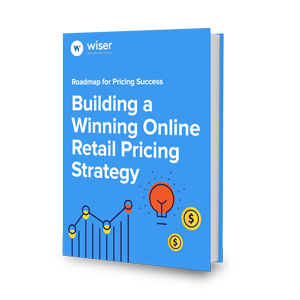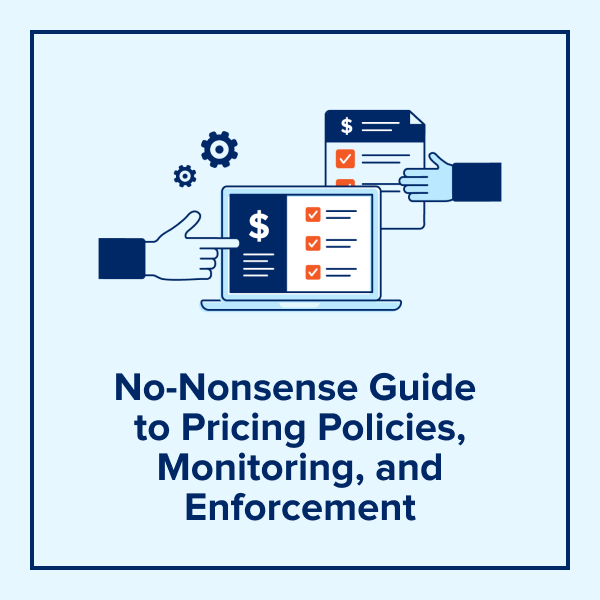Price Management: Increase Sales, Protect Your Margins, and Reprice with Confidence
A product’s price remains one of the most important factors behind any consumer’s buying decision. Is the price too high? Too low? Can I get a better deal at a different retailer or with a similar product from another brand?
One survey conducted by technology firm First Insight found that shoppers listed price as the second-most important factor behind their decision to buy, trailing only quality. Wiser’s own surveys across several different market segments, including back-to-school shoppers, headphones shoppers, and toy shoppers, all indicated price as important, in the form of price comparisons, promotions, preferred retailers, and more.
Given the thought process of these shoppers, brands and retailers are ultra-competitive with their prices. They change by the minute—or even second—and the wrong price can impede the sales of an otherwise excellent product or service.
How? Prices have a direct impact on your bottom line, of course, as the price you charge should provide a margin and return on investment that keeps your business in the black. Beyond that, your prices are also your reputation: how shoppers perceive your business. Are you premium? Budget? Something in between?
Your prices must generate profit and support your sales. That’s no small feat, which is where pricing intelligence enters the picture.
What is Price Intelligence?
Price intelligence is the ability to track, monitor, and analyze competitor and market pricing data to make educated pricing decisions for your business. Intelligence is often gathered using data mining or other automated software solutions.

Guitar Center Fine-Tunes Its Pricing Strategy with Wiser's Price Intelligence


So You’re Going to Implement a Pricing Policy: A No-Nonsense Guide to Pricing Policies, Monitoring, and Enforcement
Why is Price Intelligence Important?
Price intelligence is important because retail pricing is a fast-paced, competitive, and ever-evolving world where the right or wrong price has a direct impact on sales and profitability.
Today’s consumers are more sensitive to price than ever before. The ability to compare prices via smartphones has given rise to showrooming and webrooming, as shoppers are able to view products in store or online and check to see if a better price can be had from a different channel. In fact, there are many mobile applications designed specifically for price comparisons and most retailers offer price-match policies to stay competitive.
Furthermore, the speed and scale of eCommerce mean prices online fluctuate much quicker than possible at brick-and-mortar retailers. Amazon has been reported to adjust its products’ prices every few minutes, and many larger brands and retailers do the same. Price changes often lead to a waterfall effect, where the first brand or retailer to change a price sparks follow-up changes from competitors to match.
What can all that look like?
- Price wars can have a negative effect on margins, as competitors all race to the bottom and sacrifice profit for sales.
- The growth of marketplaces like Amazon and eBay introduce new sellers into the market, increasing competition and making it harder to track prices at scale and with speed.
Therefore, the end goal of pricing intelligence is to ensure prices always meet a core business objective: either to be competitive, protect a margin, establish a reputation, or something else. Pricing intelligence is important because it helps you achieve your goals.
What is Price Management?
- The ability to track, monitor, and analyze pricing data.
- The data required to make educated pricing decisions for your business.
- The knowledge that your price is competitive and protects your reputation
- The acquisition of data through data mining or another automated software solution.
How to Monitor Competitor Prices
Price intelligence spans three broad steps:
- Identify your competitors
- Acquire pricing data from those competitors
- Analyze that data
However, those three steps are much easier said than done, and, naturally, there is more nuance to pricing intelligence than just those steps. To dive deeper, let’s look at this in more detail.
Identify Your Competitors
The core question to ask yourself here is: “Who else is selling my products and how are these products being priced?” Your competitors will vary depending on which channels you use to sell your products, either online, in-store, or both. While you may have products across multiple channels, your competitors could be on one, or vice versa. You need to know them all.
Then, you can determine how often prices are changing across each channel. Online prices tend to change faster than brick-and-mortar prices, but you should learn exactly what is going on at your competitors. This will guide you as you determine how often you need to adjust your own prices to remain competitive.
Plus, not every competitor is created equal. You want to prioritize your competitors in order of importance and influence over your business. Simply selling the same or similar product doesn’t make a retailer a competitor. Monitor the most influential ones first to ensure you’re changing prices based on the actions of the retailers that matter most.
Acquire Pricing Data
You can acquire pricing data once you identify your competitors. Traditionally, pricing intelligence was collected manually, but that takes time and resources you may not have. Thankfully, that is no longer the case today.
Automation has made pricing intelligence much more functional and scalable. While you can still perform manual data collection or build an in-house solution, consider finding a pricing platform that fits your needs. Software solutions such as Wiser can monitor competitors’ prices across multiple channels at the SKU-level, brand-level, or category-level.
Once you know how you’re collecting pricing data, decide which products you want to track. Record product identifiers such as brand, MPN, or UPC, to name a few. An automated solution will then match that product information across competitor websites and online marketplaces, reporting on the prices listed for each SKU. With Wiser, for example, you will receive not just your competitors’ prices, but also how it compares to your current price, current margin, and a suggested new price, among other details.
You must also decide how often you need to acquire pricing data. This depends on how often your competitors change prices. If they’re adjusting prices daily, but you only collect pricing data weekly, you won’t have the full picture of your competitive landscape. Make sure you’re gathering data as often as your industry demands
Then, you can move on to Step #3.
Analyze That Data
Your competitors’ prices provide many beneficial insights for your business. Of course, there is the knowledge of your competitors’ prices for individual products that you can then benchmark against your own to see how competitive your prices are.
Beyond that, pricing intelligence highlights your competitors’ pricing strategies at scale. You can identify how often they change prices, why they change prices, and why they feel a certain price is the right one for their businesses. Then, you can extrapolate that data and use it to influence your own internal pricing decisions.
For example, you can convert your pricing data into a market price index (MPI), which is a metric that represents your price position relative to top competitors across key categories and brands. Think of it like a visual chart that quickly identifies which products are priced lower, equal to, or greater than your competitors. Then, you can quickly identify where you have pricing power and where (and how) to adjust prices to support your corporate objectives.
Importantly, pricing intelligence allows you to confidently adjust your own prices, protect your reputation, and increase your margins. Read on to learn what, specifically, you can do with competitive pricing intelligence.
What to do with Competitive Pricing Intelligence
There is a close relationship between data analysis and action. Once you understand what your competitors’ prices can tell you about your business, you can take steps to improve your own pricing strategy and better serve your customers.
That can take several forms, including:
Price Matching Policy
You may want to implement a price matching policy, where you will match a lower price offered by a competitor if specific conditions are met, such as the customer flagging the lower price at point of sale. Major retailers such as Target, Walmart, and Best Buy all have some form of pricing matching.
Manual Price Changes
You can also manually adjust prices based on your competitors’ prices. This may work if you only have a few products or need to adjust prices on a small scale or for a very limited time. Perhaps you have only a couple of products that have historically had a fixed price, but now you want to increase prices to align with the competition. Or, you’re prepping a product launch and need to know which price range is competitive in the current market.
Marketing & Sales Strategies
Pricing intelligence will also help guide you through marketing and sales strategies. You may want to create a successful promotion for a specific product and need to know the impact of a percentage off, a price decrease, or BOGO on your margins and sales projections. See where you are more expensive or less expensive than your competitors and create promotions accordingly. Or, turn to your MPI to determine where to allocate marketing spend for better ROI.
Automated Repricing
Pricing intelligence is also a crucial component of any automated repricing strategy. Repricing is ideal if you have many products and SKUs, operate in a competitive, fast-paced market, or need to adjust prices at scale.
What is Repricing?
Repricing is the act of listing a product for a different price than it is currently listed at. Simply put, any price change counts as repricing, but there are more advanced tactics behind repricing including manual repricing, rule-based repricing, and algorithmic repricing.
Why Repricing is Important
Repricing is important for many of the same reasons pricing intelligence is important: You operate in a competitive market. Prices change by the minute. Consumers are sensitive to price and it is incredibly easy to compare prices across retailers, brands, and channels.
Beyond that, your shoppers will know if your prices aren’t competitive. Few brands and retailers have customer loyalty that isn’t affected by prices, so it’s a business reality that your prices must support sales and align with shopper expectations for your business.
In addition, repricing is commonplace across all of retail. If you don’t have a strategic plan to reprice, your competitors certainly do. Given how quickly prices change, any data you collect without a repricing plan in place will become useless rather quickly. You must use your data to reap its rewards.
How to Reprice
Repricing can take several forms, which includes manual repricing. However, let’s focus on just two: rule-based repricing and dynamic pricing.
Rule-Based Repricing
Rule-based repricing is as it sounds: creating rules that dictate how and when your prices change. Popular rules include:
- Match price to your top competitor
- Match price to top three competitors
- 20 percent off current price
- 1 percent less than your top competitor
You can create and set rules that are designed to protect your margins, increase profits, align with the competition, and much more. For instance, many businesses want rules that reprice based on the season, time of day, or key drive period, such as a shopping holiday or product launch. You’ll want to research and test certain rules to figure out which one works best for your business.
Dynamic Repricing
Dynamic pricing, or algorithmic repricing, takes the concepts behind rule-based repricing and introduces additional factors alongside machine learning. The algorithm tracks your competitors’ prices and many other details, including stock levels, customer demand, and seasonality trends.
Then, the algorithm sets the optimal price based on this data. Algorithmic repricing is true pricing automation, while rule-based repricing requires more human effort to create and set the rules before the repricing engine takes over. With the algorithm, data is constantly taken into consideration to continually find that perfect price. Over time, the algorithm will continue to collect data and use that to influence its decision-making process.
Both strategies are beneficial for a business. Rule-based repricing is semi-automatic compared to the full automation of algorithmic repricing. Rule-based repricing gives you more influence over your prices while algorithmic repricing makes the pricing decisions for you if you’re too busy or not confident in your pricing knowledge.
As a result, dynamic pricing is quickly becoming the new normal. We're going to dedicate a bit more time to this concept because of how important it is for brands and retailers.
Dynamic Pricing: Advanced Pricing Strategies for a Complex World
Dynamic pricing is the natural progression of rule-based pricing. Brands and retailers face a complex, fast-paced environment that requires more customizable, intelligent, and deep tools. Many rule-based pricing strategies involve simple if-then statements. Dynamic pricing is much more because it has to be more.
Why Brands and Retailers Choose Dynamic Pricing
Dynamic pricing's ability to do more than rule-based pricing is the main selling point. But what does "do more" mean?
In general, this pricing strategy works better for enterprise retailers than small-to-medium-sized businesses. It can support more complex pricing strategies that involve complicated product taxonomy. Larger organizations with dedicated pricing teams tend to benefit greatly from this approach, especially if they manage product catalogs larger than 100,000 SKUs.
This is all because dynamic pricing's use of algorithms to manage repricing, instead of pre-set rules, allows for greater flexibility and customization. Algorithms can work faster than humans and can account for a significant number of variables to determine the ideal price.
Our Wiser team has talked with many retail professionals about the challenges faced with repricing. Some feedback we received included:
- Rule-based repricing is not compatible with pricing strategies because it is not complex enough.
- Strategies need to include velocity repricing, where prices are automatically lowered if products don't sell by a predetermined time.
- Repricing needs to consider stock levels at a minimum when recommending new prices.
The need exists for a robust repricing tool based on algorithms and machine learning, not just pre-set rules.
What Dynamic Pricing Can Do
A good dynamic pricing platform has to fulfill a few criteria in order to be successful.
Dynamic pricing must:
- Create complex, nested if-this-then-that pricing rules based on custom attributes.
- Configure product catalog taxonomies and groups and dynamically apply pricing rules to these groups.
- Create logic-based price guidelines based on IFTTT rules.
Furthermore, in order for dynamic pricing to work for today's brands and retailers, it needs to incorporate many inputs that often go beyond rule-based repricing.
Those inputs include:
Price Matching Policy
- List Price
- Ship price
- Buy-box price
- FBA
- Prime
- In-Cart
- Out-of-stocks
- Geography
- Product reviews and ratings
Product Inputs
- Cost
- Margin Floor
- Base price
- MAP price
- Promo price
Sales Inputs
- Transactions
- Units sold
- Price history
- Inventory
- Conversions
Dynamic pricing will then take those inputs and create a dynamic grouping, a dynamic price bound, and nested pricing rules. Then it will deliver the optimized price recommendation.
Dynamic Pricing Benefits
How will a dynamic pricing strategy benefit you? In several ways, depending on your role.
For starters, it can allow for catalog segmentation. You'll then be able to assign custom pricing strategies unique to the segments instead of blanket rules (a great win for category managers, for example). Dynamic pricing also lets you set different pricing strategies across product segments instead of sticking with pre-set rules.
This strategy also considers price bounds—or guidelines—when repricing. Built-in logic builders and other bounds ensure that new prices are compliant with MAP, min-margin rules, promotions, and MSRP rules. You don't price products in a vacuum, and dynamic pricing is aware of your constraints.
The algorithms working behind the scenes are also more flexible to your business needs. For example, you can develop and iterate on your strategies by inputting custom attributes and intermediate variables. The result is velocity rules, inventory rules, and performance rules (excellent for enterprise pricing analysts).
Conclusion
Are my prices competitive? Is my reputation protected? Can I grow my margins? With pricing intelligence, the answer is yes, yes, and yes.
Wiser Solutions’ pricing intelligence and automated repricing services provide accurate, real-time, actionable pricing data so brands and retailers can:
- Identify the best price for a specific product
- Track competitors’ prices across multiple channels
- Replace manual repricing with automation
- Inform future pricing, marketing, and sales initiatives
- Ensure competitive prices at scale
With Wiser, you will have the pricing intelligence you need to make educated decisions and stay competitive in your industry. Wiser has developed a unique pricing platform that combines its pricing intelligence with its repricing engine, so you have an easy-to-use dashboard where you can monitor prices and reprice across your assortment. Within that dashboard, you will see competitor prices, your repricing rules, your current prices, your margins, and much more.
Why ditch manual price monitoring and repricing? Because your prices are too important to not have accurate intelligence and automated support. Consumers are savvier today than ever before, and they’ll know if your prices aren’t competitive. And that means they’ll be buying from someone else. Don’t let that happen. We’re ready to discuss how we can customize Wiser’s pricing intelligence and repricing services to your exact specifications.
Actionable insights are a conversation away.
We’d love to give you immediate access to our Commerce Execution Suite, but first we need some information. Help us learn about your business so we can recommend an ideal solution.